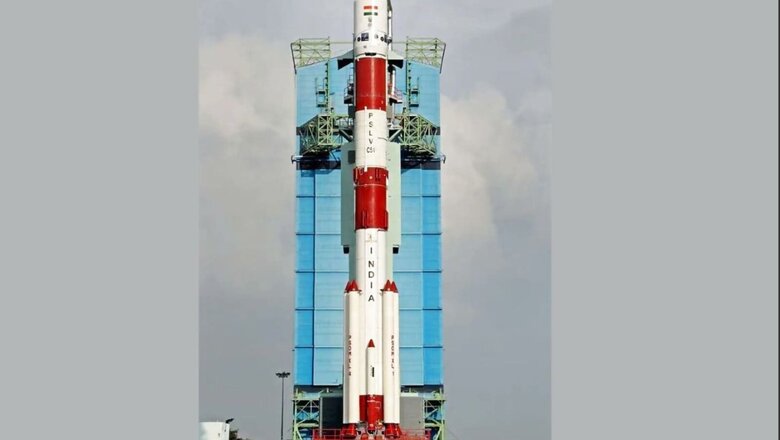
views
With more startups getting onboard, private sector participation in India’s space sector will get further momentum this weekend with the launch of ISRO’s PSLV-C54. In addition to ISRO’s Earth Observation Satellite – 06 (Oceansat-3), the rocket will carry eight nano-satellites.
On Saturday, the PSLV-C54 mission will launch from the Satish Dhawan Space Centre in Sriharikota. This will be PSLV’s 56th flight and the 24th flight of the PSLV-XL version.
The Earth Observation Satellite (EOS-06) and eight nano-satellites will be launched from the launchpad by India’s premier launch vehicle, which has a lift-off mass of 321 tonnes. The mission follows Isro’s earlier this month launch of India’s first privately-built rocket, Vikram-S by startup Skyroot Aerospace, from the sounding rocket complex.
WHAT IS ISRO LAUNCHING WITH PSLV-C54 MISSION?
On Saturday, Isro will launch nine satellites into space, including the primary satellite EOS-06 and eight nanosatellites developed by private companies and jointly by India and Bhutan.
The Earth Observation Satellite-06 is the Oceansat series’ third-generation satellite, designed to provide continuity services of Oceansat-2 spacecraft with enhanced payload specifications and application areas. The Oceansat-3 mission will include three major instruments: the Ocean Color Monitor (OCM-3), the Sea Surface Temperature Monitor (SSTM), the Ku-Band Scatterometer (SCAT-3), and ARGOS.
These nano satellites include Bengaluru-headquartered spacetech startup Pixxel’s third hyperspectral satellite ‘Anand’. “More than two years in the making and made with a lot of dedication and effort, the team can’t wait for the satellite to finally go to space and beam down some amazing #hyperspectral data”, Pixxel said.
Two Thybolt spacecraft of private spacetech company Dhruva Space will also be co-passengers on board PSLV-C54 which is slated to be launched from the first launch pad of Sriharikota spaceport at 11.56 am on November 26.
Purpose Behind the Mission
The mission’s primary goal is to ensure the data continuity of ocean colour and wind vector data in order to sustain operational applications, improve the applications, add some additional datasets such as sea surface temperature and a greater number of bands in the optical region, develop/improve related algorithms and data products to serve in well-established application areas, and increase mission utility, a report by India Today states.
The Oceansat satellite series is used for earth observation and water body monitoring. In 1999, the first Oceansat was launched into a Polar Sun Synchronous orbit about 720 kilometres above Earth. Oceansat-2 was launched on the PSLV-C14 mission in 2009.
India-Bhutan Collab
With the PSLV-C54 mission, ISRO will launch the ISRO Nano Satellite-2 for Bhutan (INS-2B) spacecraft. INS-2B will have two payloads, namely NanoMx and APRS-Digipeater. NanoMx is a multispectral optical imaging payload developed by Space Applications Centre (SAC) and APRS-Digipeater payload is jointly developed by DITT Bhutan and URSC, the report states.
About the Anand
‘Anand’ satellite is a technology demonstrator to demonstrate the capabilities and commercial applications of miniaturised earth-observation camera for earth observation using a microsatellite in Low Earth Orbit.
The Thybolt spacecraft includes a communication payload to enable rapid technology demonstration and constellation development for multiple users.
It also demonstrates Store-and-Forward functionality for authorised users in the amateur frequency band. “The satellites shall be deployed by using Dhruva Space Orbital Deployer to perform the specific mission operations for a minimum lifetime of one year,” according to the national space agency.
With inputs from agencies
Read all the Latest Explainers here


















Comments
0 comment